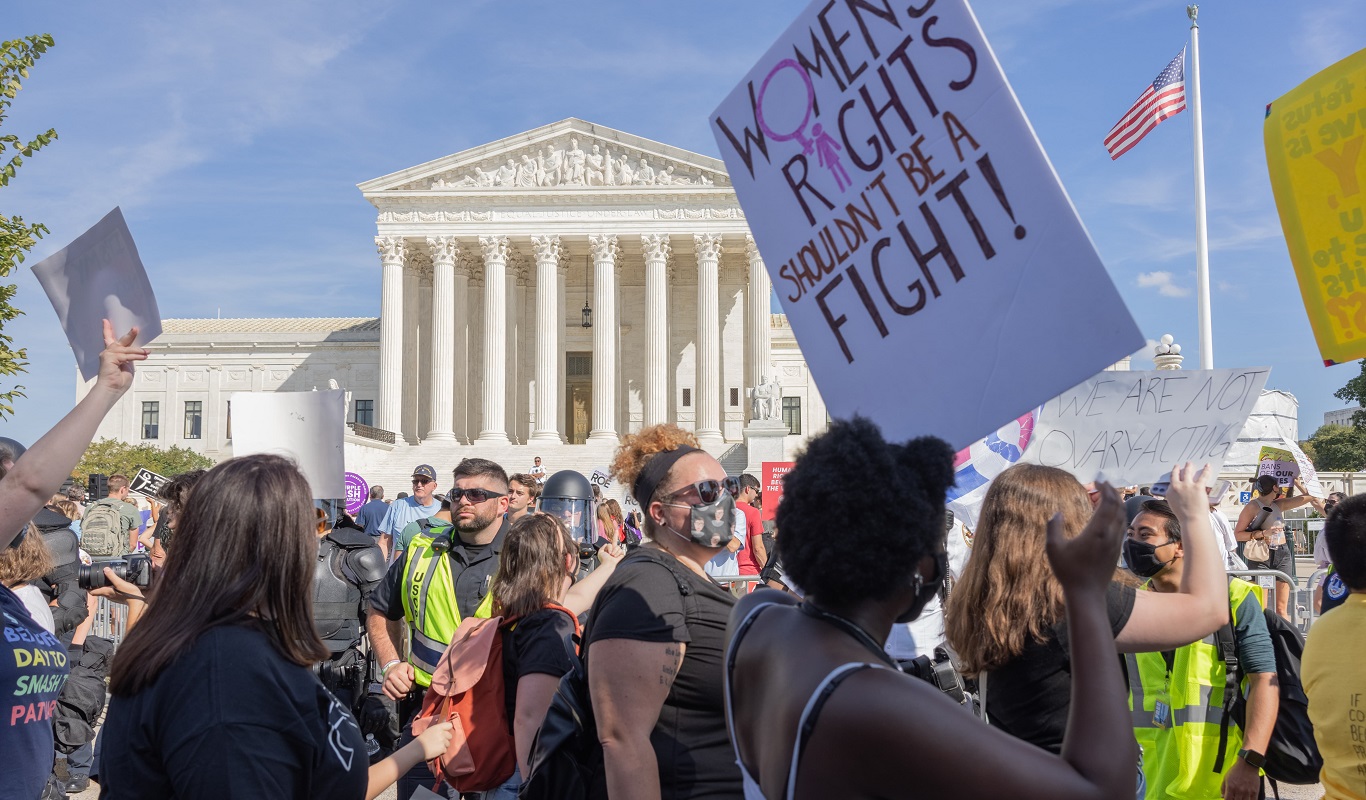Feminism and the rise of white supremacy in Canada
Special to Oxfam Canada: Written by Erica Ifill, who is an economist, journalist, founder of Not In My Colour – an equity and inclusion consultancy that builds inclusive workplaces – and co-host of the Bad + Bitchy – a podcast on politics and pop culture from an intersectional feminist perspective. Views expressed in this post are those of the author. Cannot be reproduced without permission of the author.
The threat of far-right extremism is growing in Canada. Ideas and rhetoric that were once seen as the outliers of society have been normalized through the election of Donald Trump in 2016, and social media is the glue that brings these organizations together and spreads their propaganda. However, what may surprise some is the increase in women’s participation in far-right movements. Most recent examples include Marie Le Pen, who was in the running for the presidency of France, and Tamara Lich, one of the organizers of the Ottawa Convoy that occupied the nation’s capital for three weeks.
The misogyny of the far-right is well-documented. They are staunchly anti-feminist and feel that feminism has ruined women and removed them from the traditional familial roles of the 1950s. The far-right movement's projections on women are contradictory, “oscillating between benevolent and hostile sexism,” as astute analysis in Project Syndicate revealed, “women are either weak vessels who need to be protected, or sly aggressors destroying Western nation-states in the name of gender equality.” The former highlights and champions male dominance, the latter positions men as the victims of wily she-devils who are entitled to react to the aggression of others. As usual, women can’t win.
For the far right, the recruitment of white women is necessary to grow their movement. As more far-right personalities try to go mainstream, the idea of shared family values will require women’s input or subordination. More white women also mean the birth of more white babies to counteract a conspiracy theory on the systematic replacement of white people, known as the Great Replacement Theory. These women put a kinder, gentler face on aggressively harmful rhetoric and can attract other women, mostly through social media – far-right influencers have gained prominence on YouTube and Instagram.
How could such a misogynistic movement attract women?
Let’s be honest: life is hard. And it’s gotten harder primarily for women in the working class. Around the world, women earn less than men, overall. Cross-country data compiled by the University of Oxford on the gender wage gap shows that women are economically disadvantaged due to over-representation in lower-paying jobs, are less likely to own land and are less likely to make the household decisions, while carrying the greatest household burdens. Add in government austerity policies that reduce social spending, and what is left is a cauldron of suffering for women.
In addition, the pandemic has hit women harder than men in Canada. The Canadian Centre for Policy Alternatives released a report that looked at the impact of COVID-19 on the economic security of women in Canada. They found that women were hit on multiple levels during this pandemic. From frontline workers to caregiving sectors, women represented the hardest hit workers by the provincial lockdowns in the first and second waves of the pandemic.
It is based on these lived realities that the far right is organizing and increasing their appeal to white women. And they’ve gotten quite clever at it. They have re-framed their anti-feminist and anti-women rhetoric by focusing on social benefits. Called “welfare chauvinism”, the European Centre for Populism Studies explains that this approach to attracting women combines white nationalist principles with left-wing social policies, such as family and child benefits.

Immigration and identity are used as wedge issues to create a tension with non-white workers. For working-class white women, who often are in direct competition with immigrants or migrants – who are most likely of colour – for jobs, the tension between the disappearing welfare state (state benefits) and the increased migration of displaced persons have resulted in women who are vulnerable to the far right. The Observer Research Foundation explains: “Since women have traditionally held dispensable part-time positions or worked in the informal sector wherein job security is low and competition with immigrants for limited resources is high, their grievances against immigration found takers within the far-right.”
Another tactic of far-right actors to attract women into their midst is to co-opt feminist language while actively promoting harm. They rebrand slogans such as “my body, my choice”, used by feminists to champion bodily autonomy when it comes to abortion, to be more palatable to women. This tactic has another purpose: to confuse women as to the slogan’s meaning, which disarms progressive movements.

Finally, there is a growing overlap between New Age practices, or the wellness industry, and white supremacy. Even the Nazis were into yoga. Known as the wellness-to-white supremacy pipeline, these spaces have become breeding grounds for misinformation and white supremacy and are often hostile to Black, Indigenous, People of Colour (BIPOC). The wellness space tends to be suspicious of Western medicine, so it’s no surprise it became an important conduit for anti-vaccination conspiracy theories. And that’s what the far-right does: it uses anger or frustration from one issue as a direct channel to their particular brand of nationalist and white supremacist propaganda.
Recent developments in public policy, such as the impending reversal of Roe v Wade in the United States, are cause for concern. This is feminism’s raison d’être, and we are outsized and outmatched by the onslaught of restrictive public policies that roll back the gains feminism has made in the last sixty years. The perfect storm of an affordability crisis, curtailing of public services, employment precarity and a global pandemic affords the far right openings for engagement and organizing.
Feminism must do the same before it’s too late.
We must form communities of resistance with each other, and other progressive movements, to combat the increasing recruitment of women to the far right in Canada. If we don’t, the alternative could look like the Handmaid’s Tale.


